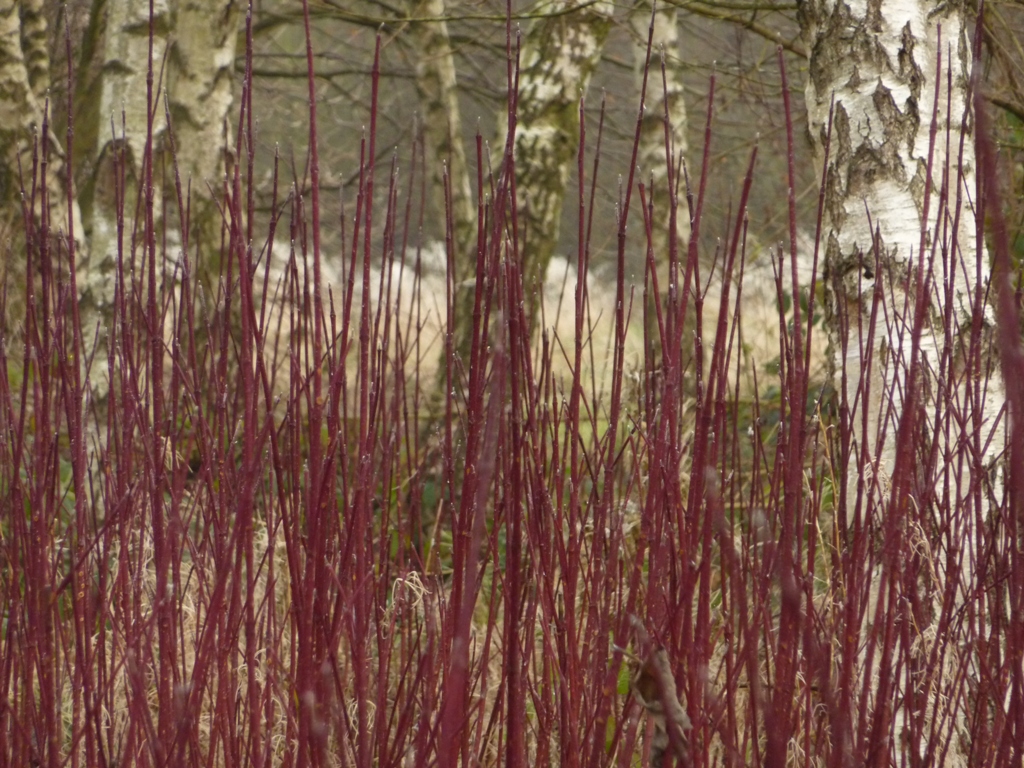
After finishing my last post I’ve decided to pick a rather good looking family in the winter time and that is the Dogwood Family or Cornaceae.
It however consists of only one genus and has only two native species, the other three have been introduced .
Several of the species are eye catching with their coloured stems and one Cornus is also flowering at this time of the year! Recently I’ve stayed with my friend near Arezzo, Tuscany, in Italy where many grow in the wild!
Pictures by Matt Summers (M.S.) and various contributers of Wikipedia Commons. FBBC added behind the Common name if the plant occurs in Birmingham and Black Country area.
Contents:
Cornus sanguinea or Dogwood FBBC and – Ssp. sanguinea – Ssp. australis
C. sericea or Red-Osier Dogwood FBBC
C. alba or White Dogwood FBBC
C. mas or Cornelian Cherry
C. suecica or Dwarf Cornel
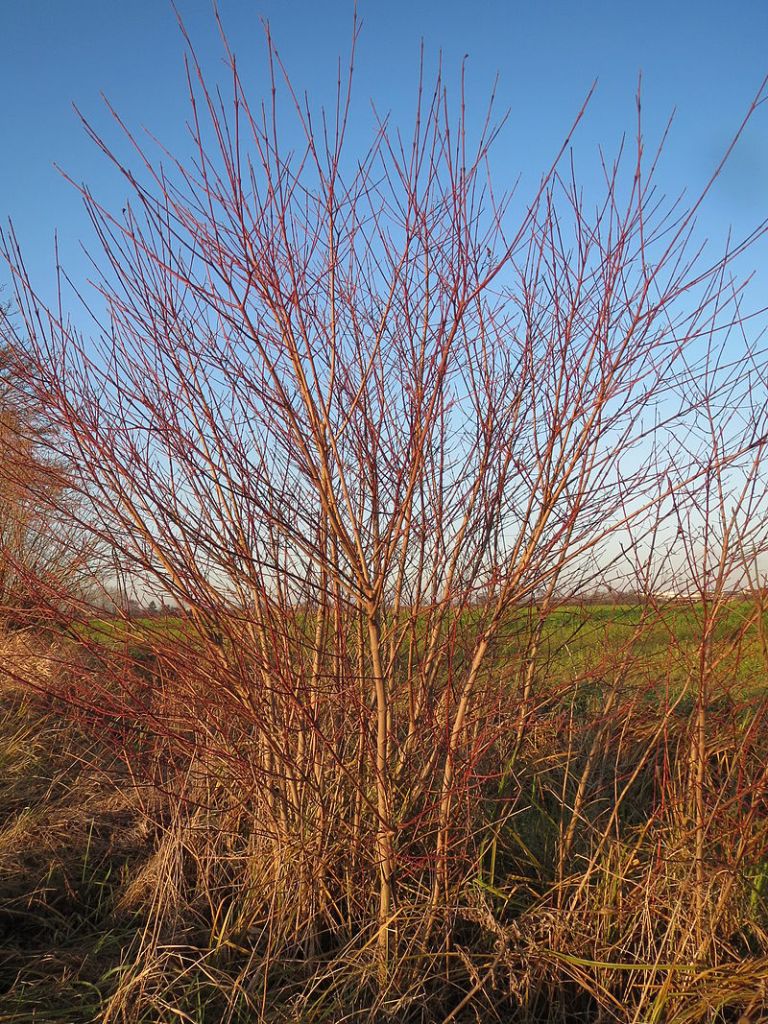
Cornus sanguinea or Dogwood and – Ssp. sanguinea (native) – Ssp. australis
A deciduous shrub, locally frequent in woodland, scrub, hedgerows and shelter-belts on limestone soils or base-rich clays, and sometimes dominant in hedges and scrub on chalk. It is frequently planted in landscaping schemes, new hedges and is introduced widely, or occurs as an escape, outside its native range.
The leaves provide food for some animals, including Lepidoptera such as the case-bearer moth Coleophora anatipennella. Dogberries are eaten by some mammals and many birds. Many frugivorous passerines find them irresistible, and prefer them over fruits grown by humans. The plant is thus often grown in organic gardening and permaculture to prevent harm to orchard crops, while benefitting from the fact that even frugivorous birds will hunt pest insects during the breeding season, as their young require much protein to grow.
A popular Garden cultivar is called ‘Midwinter Fire‘ because the leaves turn orange-yellow in autumn and then fall to reveal striking red winter stems.
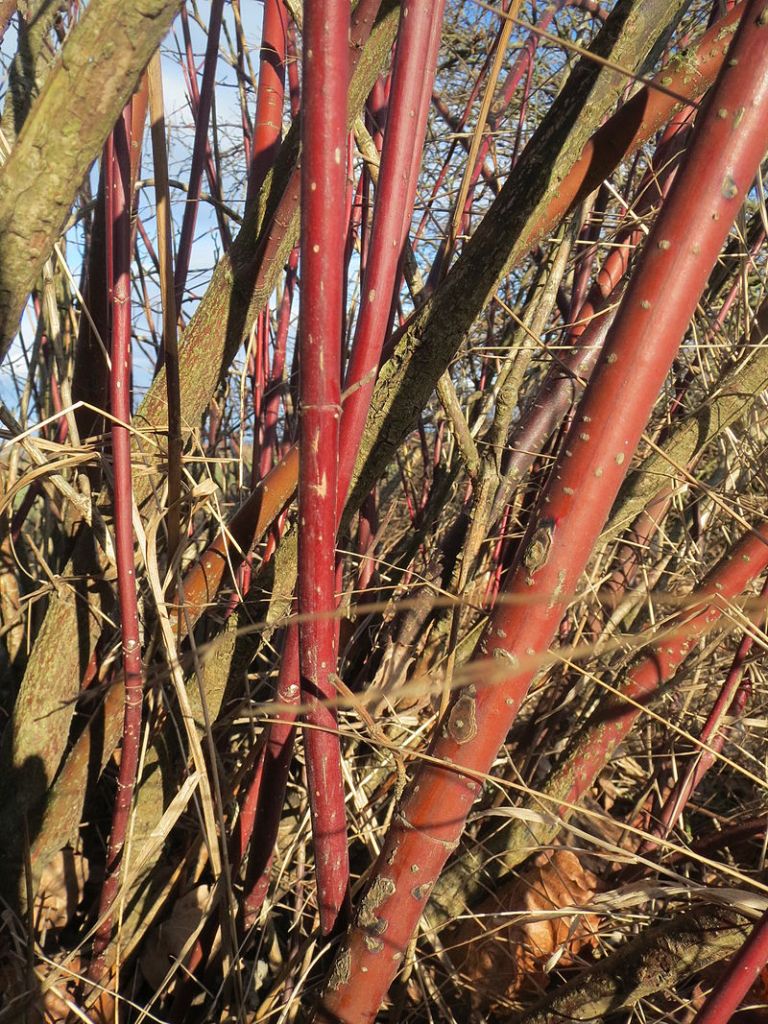
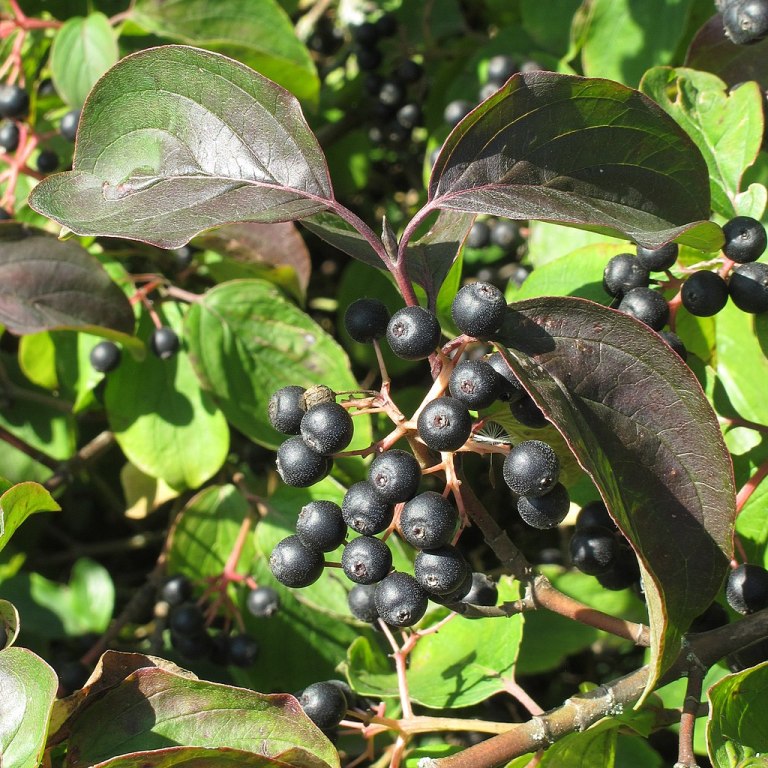
The straight woody shoots produced by the plant can be used as prods, skewers or arrows.
The prehistoric archer known as Ötzi the Iceman, discovered in 1991 on the border between Italy and Austria, was carrying arrow shafts made from dogwood. The common name, dogwood, comes from Cornus sanguinea, the hard wood of which Northern Europeans used to make nails (“dags”) during the medieval era.
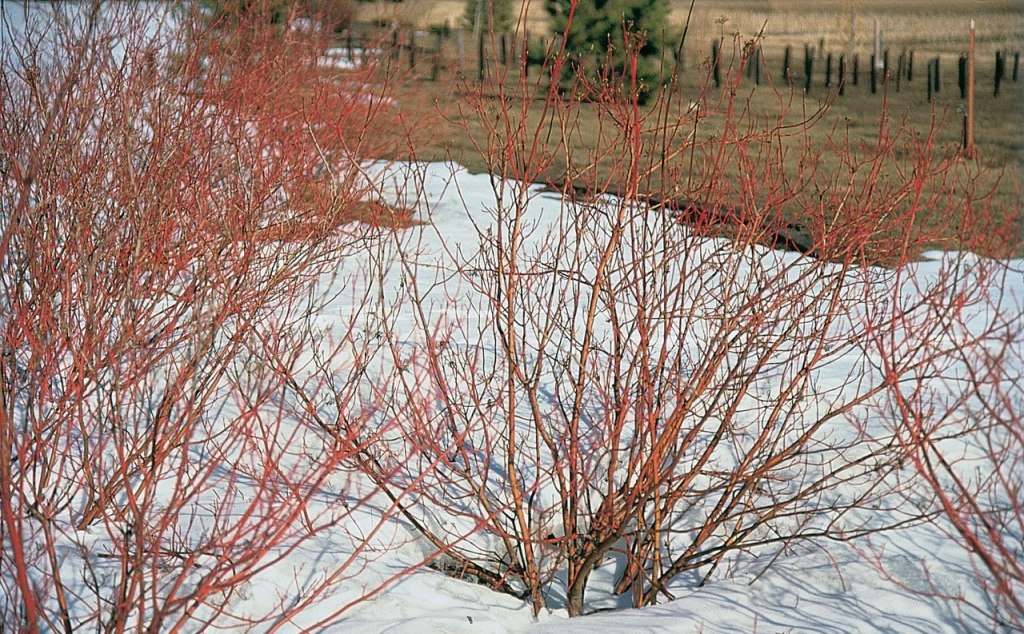
C. sericea or Red-Osier Dogwood (Neophyte)
A deciduous shrub, often spreading by suckers or layering to form extensive thickets, widely planted in parkland, amenity plantings, hedges and on roadsides and found naturalized in wet woodland, along riversides, on waste ground and marginal land.
It was cultivated in Britain by 1683. It was known from the wild by 1838 (Loch Duich, West Ross) and by 2000 was well-naturalized in many places.
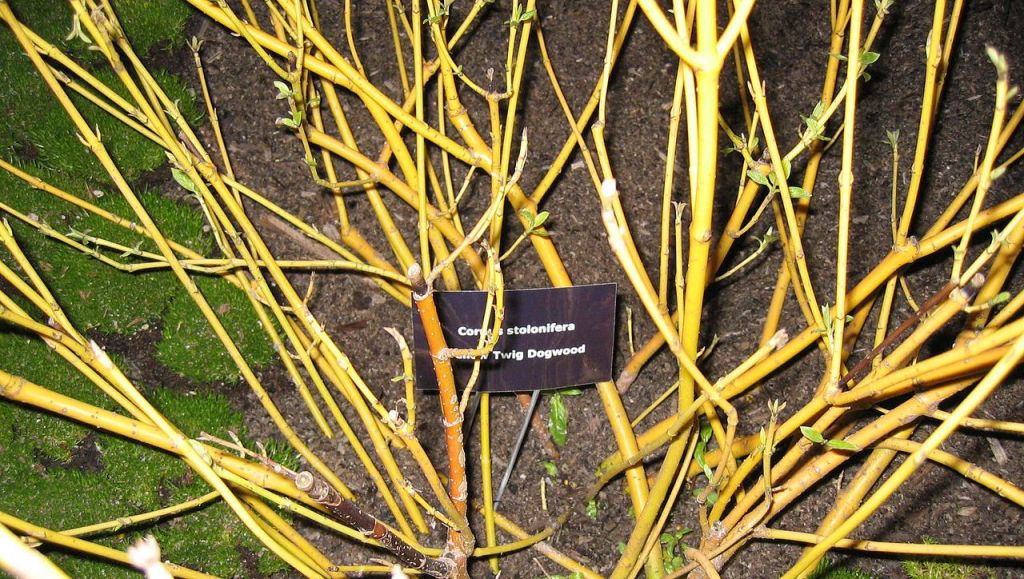
Cornus sericea is planted for the red twigs in the dormant season. The cultivars ‘Bud’s Yellow’, ‘Flaviramea’ with lime green stems, and ‘Hedgerows Gold’ (variegated foliage) have gained the Royal Horticultural Society‘s Award of Garden Merit
In its native Northern America it has been used:
- for waterway bank erosion protection and restoration
- its ability to be reproduced by cuttings makes it a low-cost solution for large-scale plantings.
- Some Plateau Indigenous tribes ate the berries to treat colds and to slow bleeding.
- The inner bark was used as “traditional tobacco”, either by itself or in a mixture with other plant materials.
- The Ojibwe used red-osier dogwood bark as a dye by taking the inner bark and mixing it with other plants or minerals.
The withies, or osiers, are used in basketry.
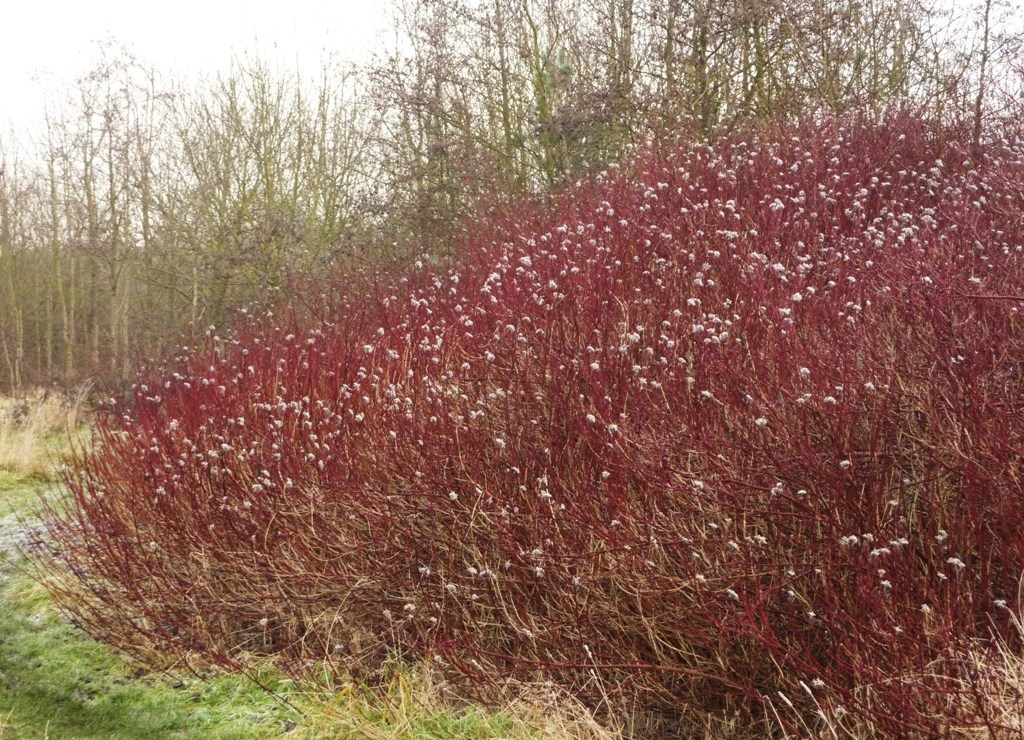
C. alba or White Dogwood (Neophyte)
A deciduous shrub, often spreading by suckers or layering, as well as being spread by birds, widely planted in hedges, on roadsides, in parks, for game cover and in amenity plantings. C. alba was introduced to cultivation in 1741 and the first confirmed record in the wild was in 1875 (Tywyn, Merionethshire).
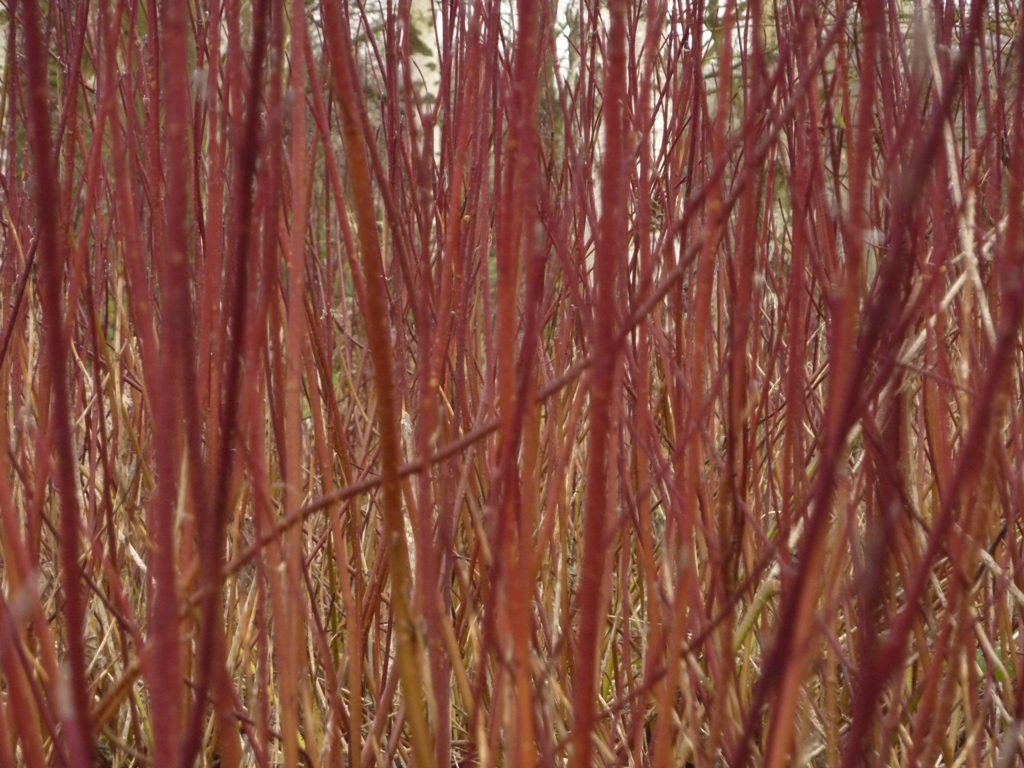
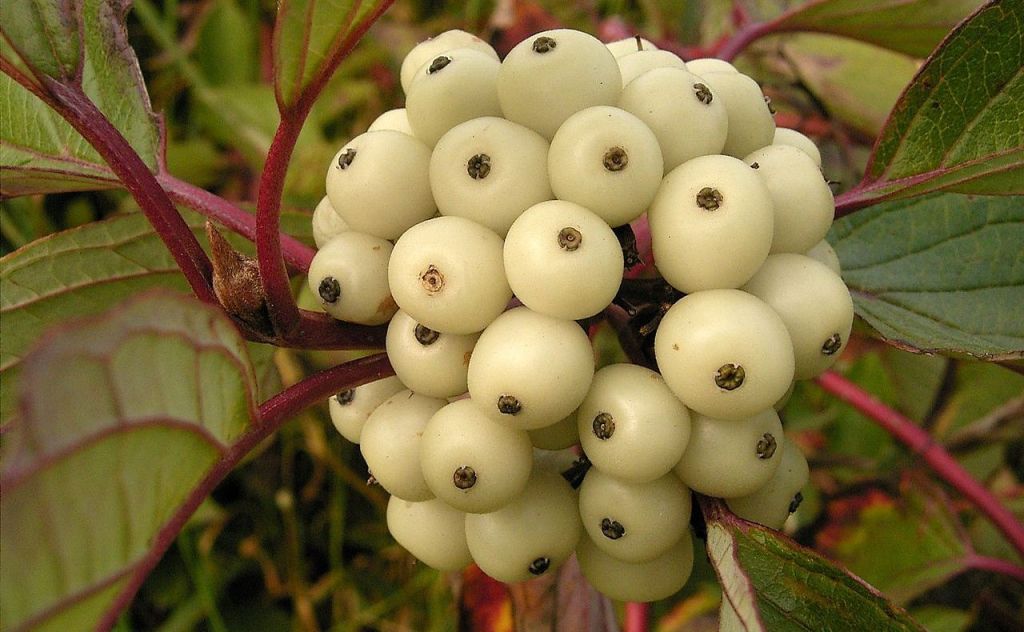
As a popular ornamental used in landscaping its notable features include the red stems in autumn through late winter, autumn coloured leaves and the variegated foliage in some cultivars, such as C. alba ‘Elegantissima’. C. alba can grow to 3 m (10 ft) high, but variegated forms are less vigorous. The oval fruits are white, sometimes tinted blue.
The following cultivars have gained the Royal Horticultural Society‘s Award of Garden Merit .
- ‘Aurea’ (yellow leaves)
- ‘Elegantissima’ (variegated white leaves, deep red stems and small white flowers)
- ‘Sibirica’ (2.5 m (8 ft 2 in), brilliant red stems, cream flowers)
- ‘Spaethii’ (variegated, cream leaves with yellow margins)
The seeds contain 30% oil, which is used industrially
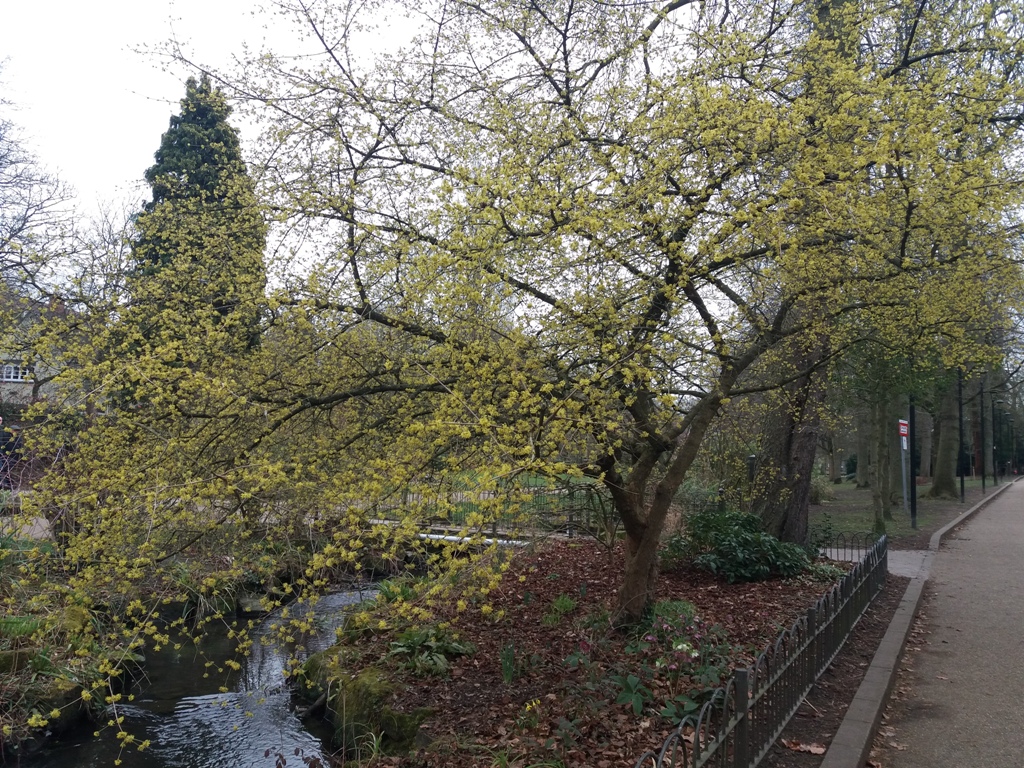
C. mas or Cornelian Cherry (Neophyte)
A shrub or small tree with yellowish flowers in the early spring, widely planted in gardens, hedges and parks, also found in woodland, scrub and on roadsides.
C. mas was cultivated in Britain by 1551 as an ornamental and for medicine, wooden tools and edible fruit but was not recorded from the wild until 1932.
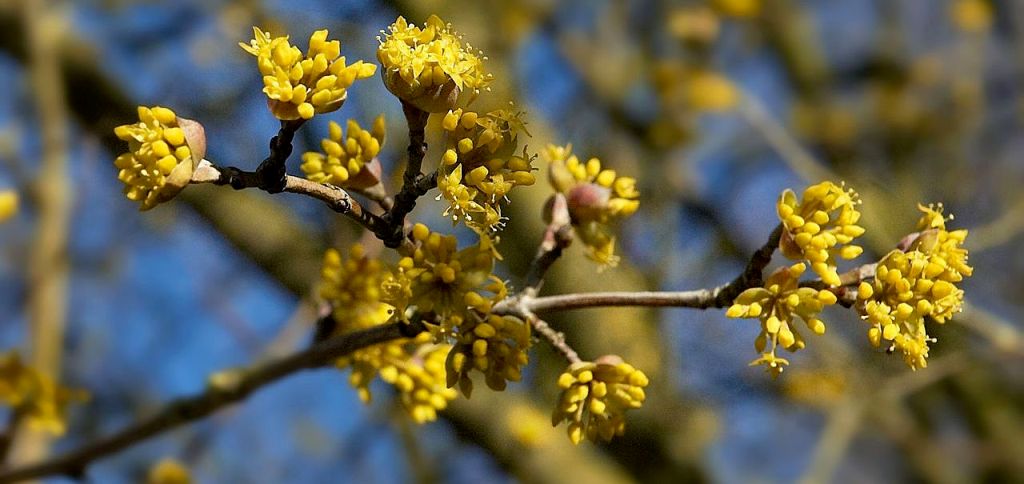
In the B.I. the species is mainly seen as an ornamental plant for its late winter yellow flowers, which open earlier than those of Forsythia.
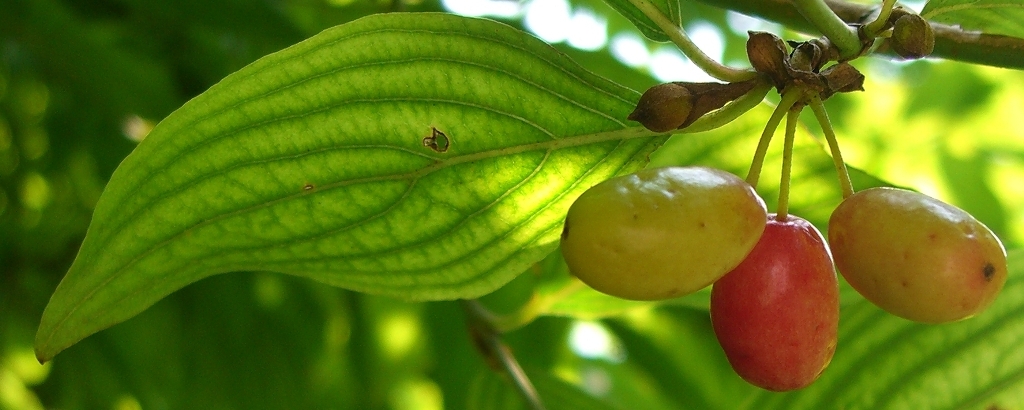
Its cherry-like fruits are only produced after hot summers in the UK. It has an acidic flavor which is best described as a mixture of cranberry and sour cherry; it is mainly used for making jam.
The leaves and fruit of Cornus mas (together with the fruit of C. officinalis) has a history of use in traditional Chinese medicine in which it is known as shānzhūyú, and used to retain the jing.
The wood of C. mas is extremely dense and, unlike the wood of most other woody plant species, sinks in water. This density makes it valuable for crafting into tool handles, parts for machines, etc.
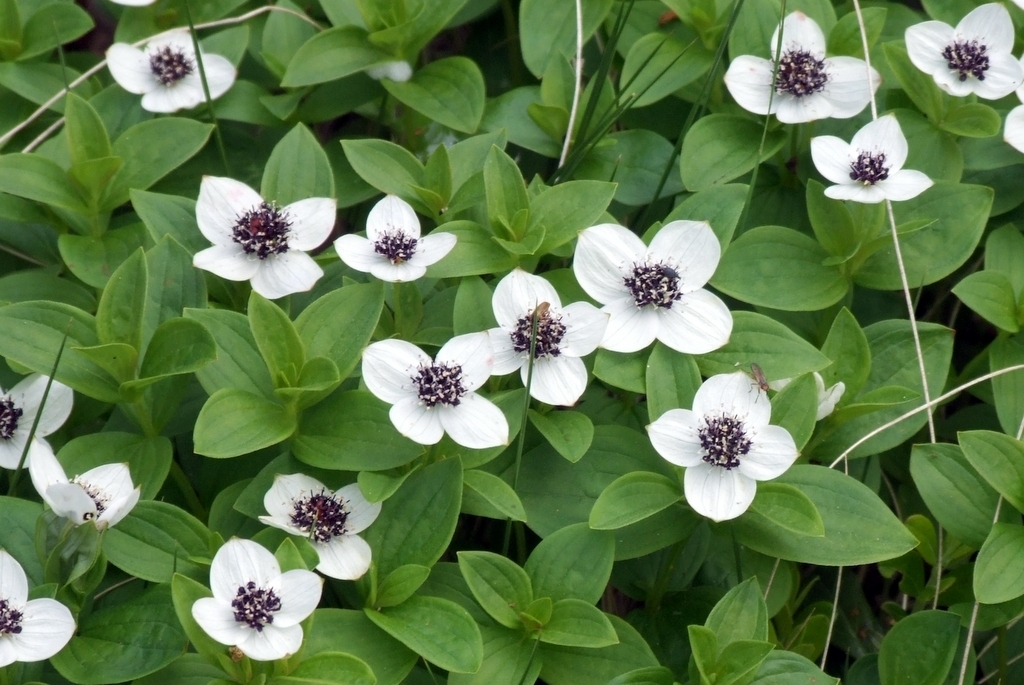
C. suecica or Dwarf Cornel
A low-growing rhizomatous perennial herb of wet, base-poor peats at moderate to high altitudes, including areas of late snow-lie. It is almost entirely confined to montane dwarf shrub heath communities, but also extends into acid montane grassland.
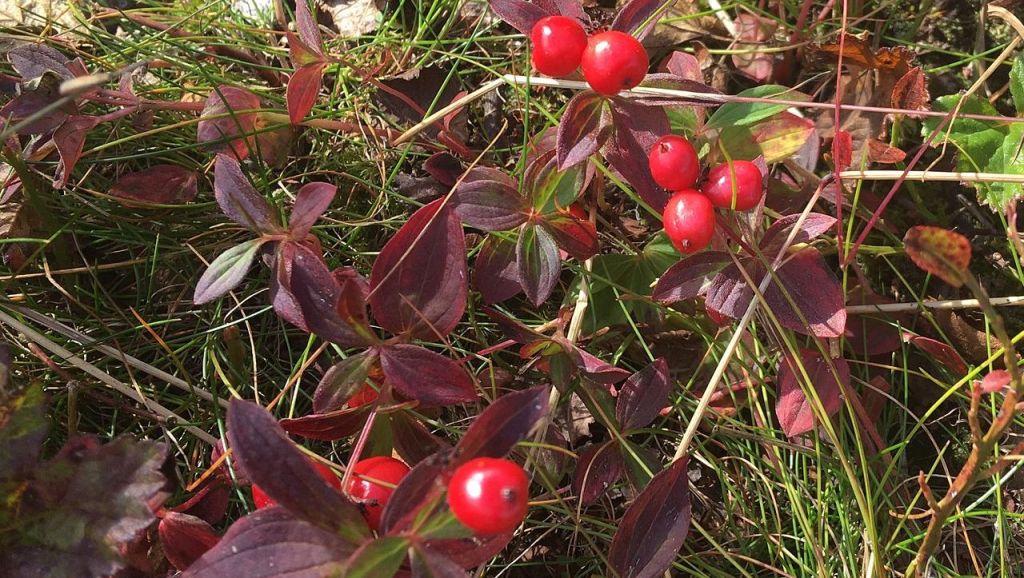
Fruit is usually mixed with other berries. Bitter and unpalatable. The fruit is rich in pectin and is considered to be a good tonic for the appetite.
It is an attractive ground cover in the right growing conditions.
